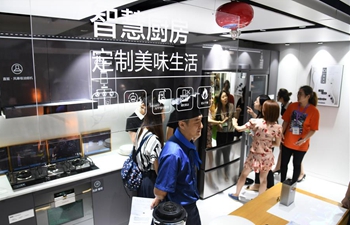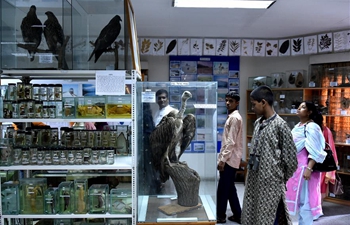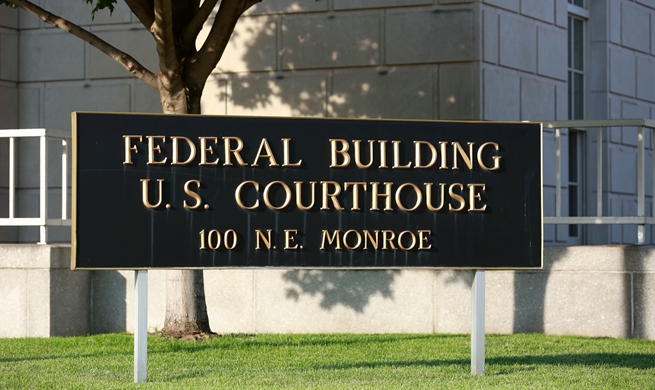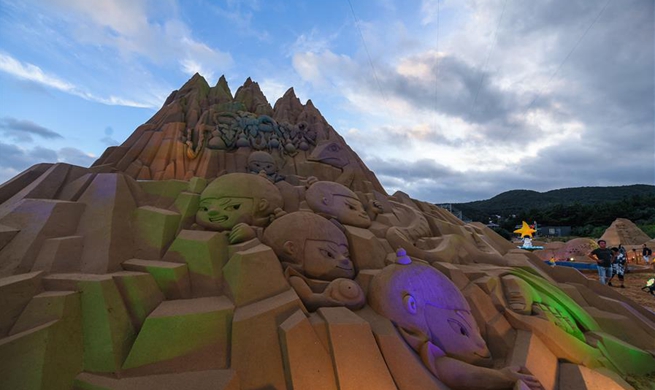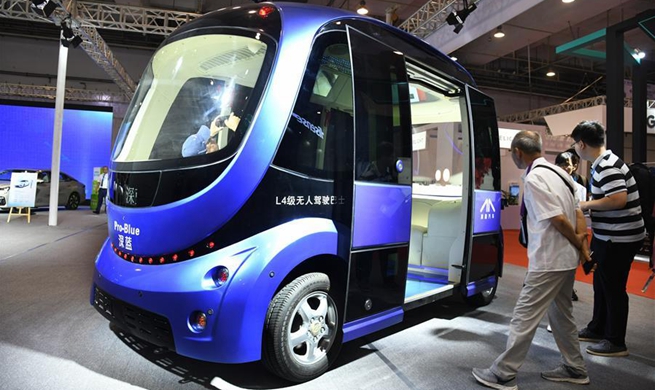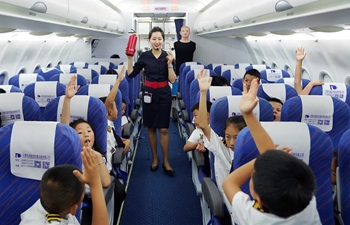BEIJING, July 19 (Xinhua) -- China's space lab Tiangong-2 reentered the earth's atmosphere under control at around 9:06 p.m. on Friday (Beijing time), China Manned Space Agency (CMSA) said.
A small amount of the spacecraft's debris fell into the predetermined safe sea area in the South Pacific, according to the agency.
Tiangong-2's controlled reentry into the atmosphere marks the successful completion of all the tasks in the space lab phase in China's manned space program, said Zhou Jianping, chief designer of China's manned space program.
Efforts are being made to step up preparations for constructing China's space station, CMSA said.
Tiangong-2, an improved version of Tiangong-1, is considered China's first space lab. Launched on Sept. 15, 2016, the space lab has worked in orbit over 1,000 days, much longer than its 2-year designed lifespan.
Comprising an experiment module and a resource module, the space lab has a total length of 10.4 meters, a maximum diameter of 3.35 meters and a takeoff weight of 8.6 tonnes. After its solar panels are unfolded, its wingspan reaches 18.4 meters.
Tiangong-2 has docked with the Shenzhou-11 manned spaceship and Tianzhou-1 cargo spacecraft. Chinese astronauts Jing Haipeng and Chen Dong stayed 30 days in the space lab.
"With the successful controlled deorbit, the Tiangong-2 mission has been completed perfectly. It demonstrates that China sticks firmly to its international duties and keeps its promise of peaceful and scientific use of space resources," said Zhu Congpeng, chief designer of Tiangong-2 from the China Academy of Space Technology (CAST).
"Although Tiangong-2 had been in operation nearly one year longer than its designed lifespan, its platform and payloads functioned stably and soundly, and the propellant it carried was still sufficient to support its flight in orbit for another several years," Zhu said, "It's hard to say goodbye to Tiangong-2, but considering reliability- and safety-related factors, we have to drive it out of orbit now."
"To let Tiangong-2 'retire' by choice is to ensure the absolute safety of its departure," Zhu said.
With its time in operation prolonged, its reliability would decrease. Once any abnormalities occurred, Tiangong-2 would gradually fall into the Earth's atmosphere out of control. Some materials with a high melting point might not be burnt out completely, and a small amount of debris would be possibly left hitting the ground and endangering the people in the vicinity, he explained.
"A controlled breakaway from the orbit ensures the ground safety by descending the space lab in the designated area at the designated time," he said.
To guarantee the accuracy of the landing, the Tiangong-2 flight control team from CAST carried out repeated simulations and made a detailed flight control plan. During the deorbit, they monitored and adjusted the spacecraft's speed and angle constantly to maintain the best posture for reentry.
This represents the second time that China has deorbited a spacecraft under control. Tianzhou-1, China's first cargo spacecraft, adopted a "one-step" flight control strategy and reentered the Earth's atmosphere about five months after it was launched in April 2017.
Tiangong-2, however, took two steps -- first to be lowered to an elliptical orbit with the perigee at 200 km, and then further lowered to an elliptical orbit with a perigee at 70 km and reentered the atmosphere.
"We did not follow the established route, but instead forged a new path so as to collect more data during the process and learn more about the properties of different orbits," Zhu said.
Around Earth, there are more than 20,000 pieces of space debris larger than 10 centimeters, which are all deadly threats to operational spacecrafts. It will take the debris in low Earth orbit 400 km from our planet as long as 10 years to descend naturally and burn up in the atmosphere, and those in higher orbits even longer. Destruction by choice has become a common pursuit around the globe, although the deorbit technology remains a hard nut to crack.
The success of the controlled deorbit of Tiangong-2 will help promote the technology. Due to constant adjustments to its posture and speed, a spacecraft will consume a considerable amount of fuel when leaving its orbit. If a controlled deorbit scheme can be optimized to minimize the consumption of fuel, it will be of great use to clear out-of-service spacecrafts in medium and high Earth orbits. It is also of great significance to the development of economical, harmonious and green space undertakings, according to experts from CAST.
The flight control team will continue to study and dig through the data to search for better and safer deorbit strategies, they said.






